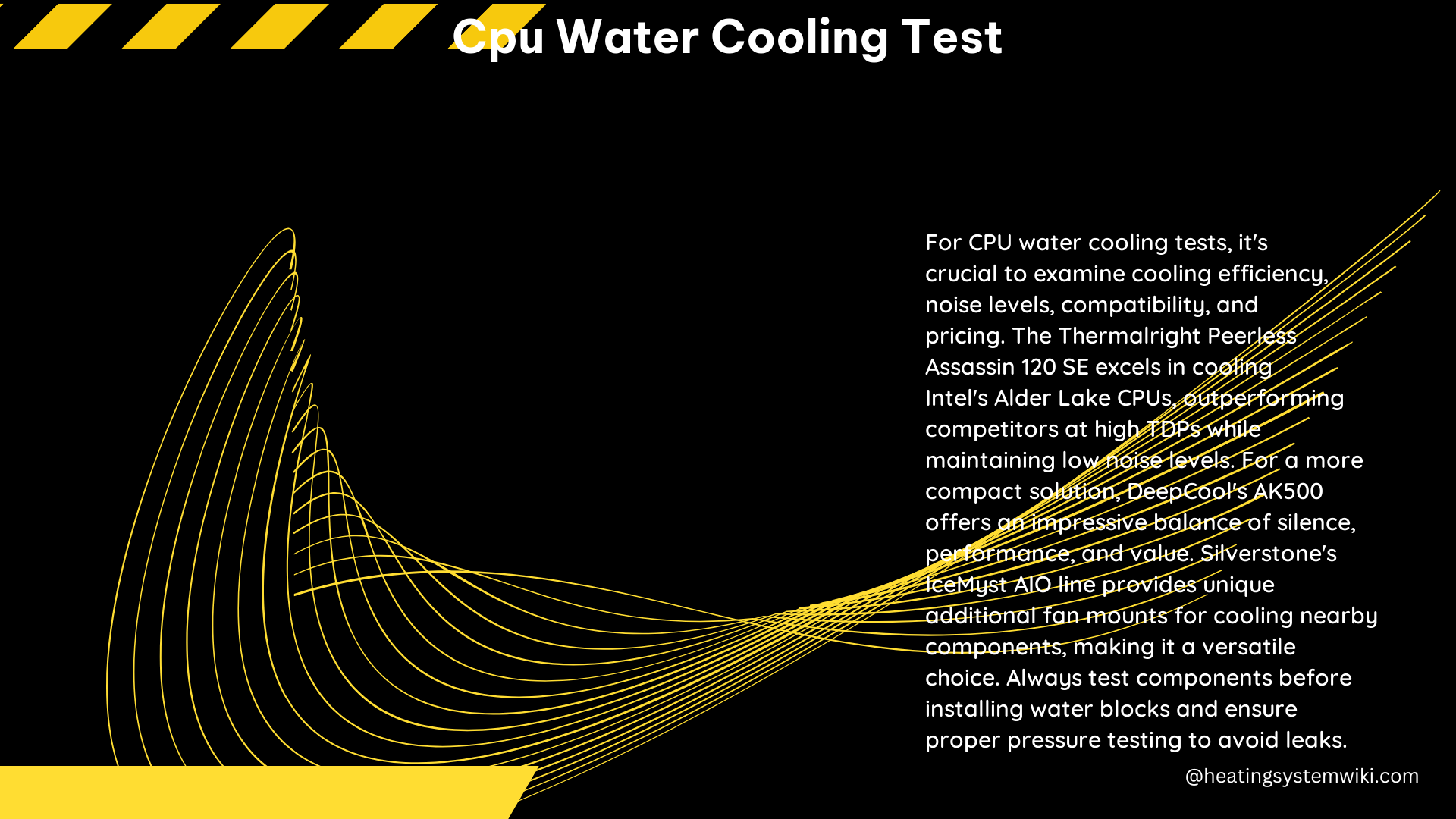When it comes to building a high-performance PC, the choice between air cooling and water cooling is a crucial decision. Water cooling systems offer superior cooling capabilities, allowing enthusiasts to push their CPUs to the limits. However, to ensure the longevity and efficiency of a water cooling setup, a thorough testing process is essential. This comprehensive guide will walk you through the step-by-step process of conducting a comprehensive CPU water cooling test, covering every aspect from temperature monitoring to leak-proofness.
Preparation: Ensuring a Clean and Dust-Free System
Before you begin the testing process, it’s crucial to ensure that your system is clean and free of any dust or debris. Start by using compressed air or a soft brush to thoroughly clean the radiator, fans, and other physical components of the water cooling system. This step is essential to maintain optimal airflow and heat dissipation, which are crucial for the overall performance and longevity of your water cooling setup.
Temperature and Pressure Monitoring

Monitoring the temperature and pressure of your CPU water cooling system is a critical aspect of the testing process. Utilize software tools like HWMonitor, Open Hardware Monitor, or AIDA64 to track the temperature of your CPU, GPU, and other key components. These tools can also provide valuable information about the pressure of the coolant, which is essential for understanding the overall efficiency of the system.
When monitoring the temperature, pay close attention to the CPU temperature, as this is the primary component that the water cooling system is designed to cool. Ideally, you should aim for CPU temperatures below 80°C (176°F) under heavy load, with the optimal range being between 60°C (140°F) and 70°C (158°F). Any temperatures exceeding 80°C (176°F) may indicate a problem with the water cooling system and require further investigation.
Physical Component Check
Inspect the physical components of your water cooling system, including the pump and radiator, for any unusual noises or vibrations. Touch the pump to feel the flow of the coolant, and visually inspect the radiator for any dust or debris buildup. This step can help you identify potential issues with the mechanical components of the system, which can impact the overall cooling performance.
Flow Rate Measurement
Measuring the flow rate of the coolant is crucial for determining the cooling efficiency and pressure of your water cooling system. Use a flow meter to accurately measure the flow rate, which should typically be between 0.5 and 1.5 liters per minute (L/min) for a standard water cooling setup. A flow rate outside of this range may indicate a problem with the pump or other components in the loop.
Leak-Proofness Test
Ensuring the leak-proofness of your water cooling system is essential to prevent costly damage to your PC components. Use a pressure tester to apply air pressure to the loop and monitor the pressure gauge for any drops over time, which would indicate a leak. Additionally, use a paper towel or tissue to wipe around the fittings and joints, checking for any moisture that could signify a leak.
Coolant Level and Quality Check
Maintain the proper coolant level in your water cooling system to ensure optimal performance. The coolant level should be sufficient to fill the loop and the reservoir, without overflowing or leaving air bubbles. Additionally, check the quality of the coolant, ensuring it is clear and free of any contaminants, such as algae, corrosion, or sediment. Use a refractometer to measure the coolant’s concentration and freezing point, as these factors can impact the system’s cooling efficiency.
Regular Maintenance
Proper maintenance is crucial for the long-term performance and reliability of your water cooling system. Regularly flush the loop with distilled water or a cleaning solution to remove any buildup of debris or contaminants. Clean the radiator and fans to maintain optimal airflow, and replace any worn or damaged parts, such as tubing or fittings. Additionally, change the coolant every 6 to 12 months to ensure the system continues to perform at its best.
Temperature and Pressure Testing
After setting up the entire water cooling loop, let the system run for a while to ensure that everything is working correctly. Utilize the software tools you used earlier to monitor the temperature and pressure of the system, and make any necessary adjustments to the settings or components to optimize the performance.
Advanced Considerations
For those seeking more advanced hands-on details and technical specifications, consider the Thermalright Peerless Assassin 120 SE and the Silverstone IceMyst AIO coolers. The Thermalright Peerless Assassin 120 SE is an air cooler that delivers exceptional performance for Intel’s Alder Lake CPUs, while the Silverstone IceMyst AIO cooler offers unique options for additional cooling to components around the CPU.
By following this comprehensive guide, you can ensure that your CPU water cooling system is operating at its peak performance, providing the necessary cooling to push your hardware to its limits while maintaining reliability and longevity.
References:
